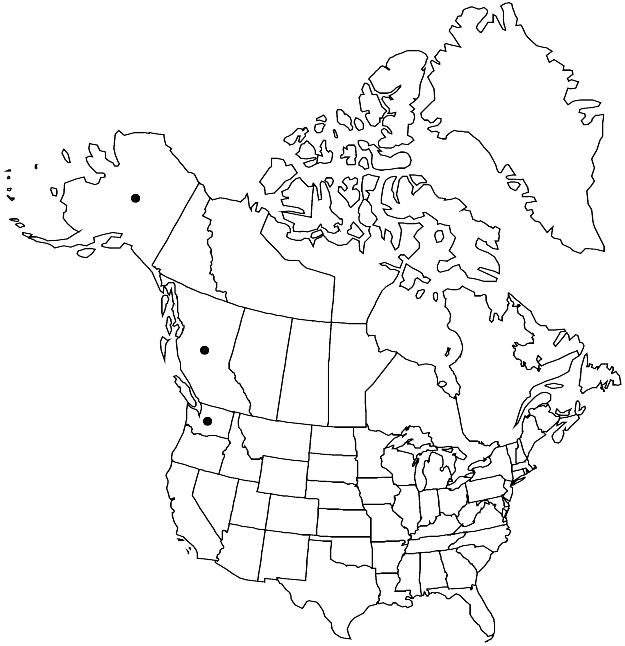Pohlia cardotii
in H. G. A. Engler and K. Prantl, Nat. Pflanzenfam. 218[I,3]: 547. 1903.
Plants medium-sized to large, green, sometimes red tinged, dull. Stems 0.4–2.5 cm. Leaves erect to ± spreading, ovate-lanceolate, 0.7–1.5 mm; margins strongly recurved, serrulate to serrate in distal 1/3; costa subpercurrent; distal medial laminal cells rhombic, 18–50 µm, walls thick, ± porose. Specialized asexual reproduction absent. Sexual condition dioicous; perigonial leaves broadly short-ovate; perichaetial leaves weakly differentiated, elongate-lanceolate. Seta orange-brown. Capsule inclined 0–20°, brown to stramineous, narrowly pyriform, neck 1/3 urn length; exothecial cells short-rectangular, walls sinuate; stomata superficial; annulus present; operculum bluntly to acutely conic; exostome teeth yellow to brown, narrowly triangular-acute; endostome hyaline, basal membrane scarcely exceeding capsule rim, segments narrow, weakly keeled, distinctly perforate, cilia absent to rudimentary. Spores 14–19 µm, finely roughened.
Phenology: Capsules mature summer (Jun–Aug).
Habitat: Soil in mesic alpine and subalpine zones
Elevation: high elevations
Distribution

B.C., Alaska, Wash., Europe.
Discussion
Pohlia cardotii is a rare alpine species characterized by dull green, relatively broad leaves with wide costae and recurved margins. The distal medial laminal cells of P. cardotii have more or less porose walls. The sporophytes are erect, with irregular exostome teeth, a low endostomial basal membrane, and narrow, slightly keeled, broadly perforate segments. This species sometimes forms deep turfs in moist alpine sites.
Selected References
None.